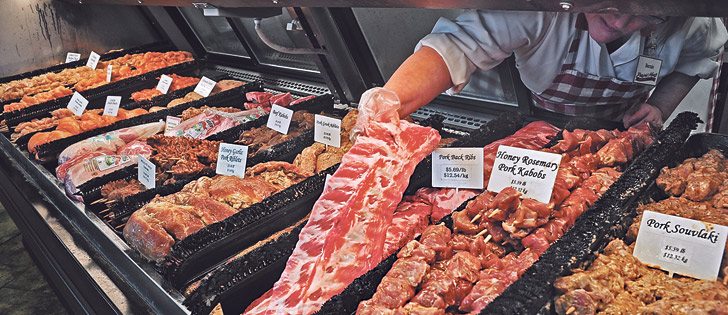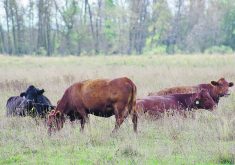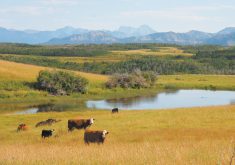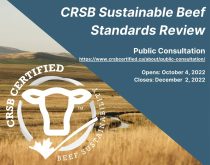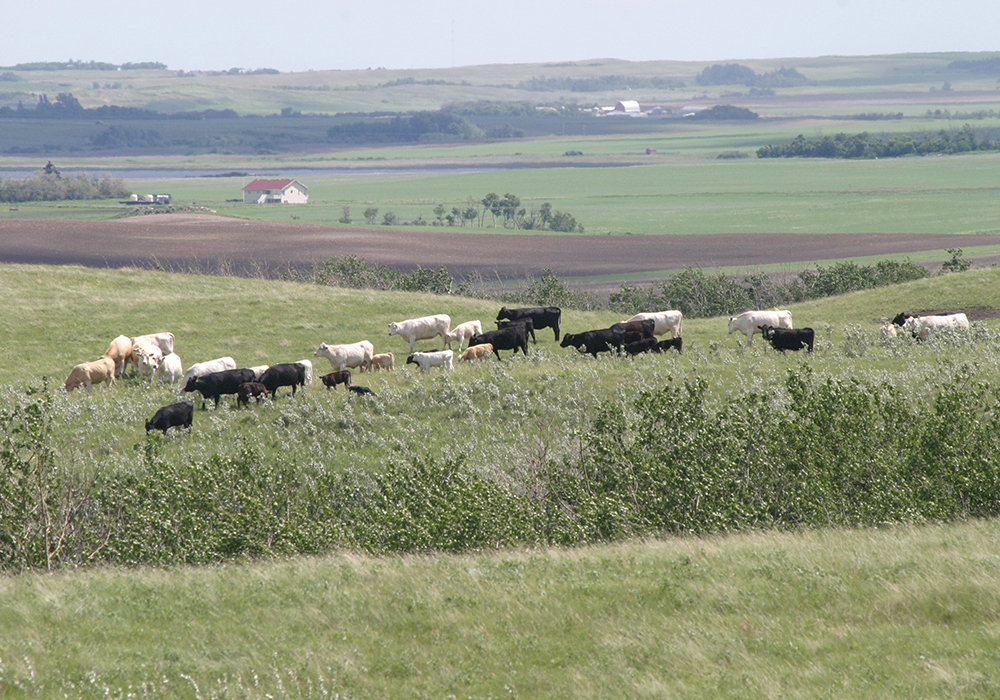BANFF, Alta. — The humble cow is being charged with environmental degradation for doing what comes naturally —eating grass, chewing its cud and burping.
Cattle that graze on pastures have been linked to climate change be-cause of greenhouse gas emissions such as methane.
The need to defend cattle’s impact on the environment and deflect criticism over the ethics of raising animals for food are among the challenges that groups such as the Global Roundtable for Sustainable Beef must address.
More than 200 people attended the conference, held in Banff Oct. 4-7, to discuss ways to regain consumer confidence and prove that the livestock sector is trying to do the right thing by the environment, the economy and society.
Read Also
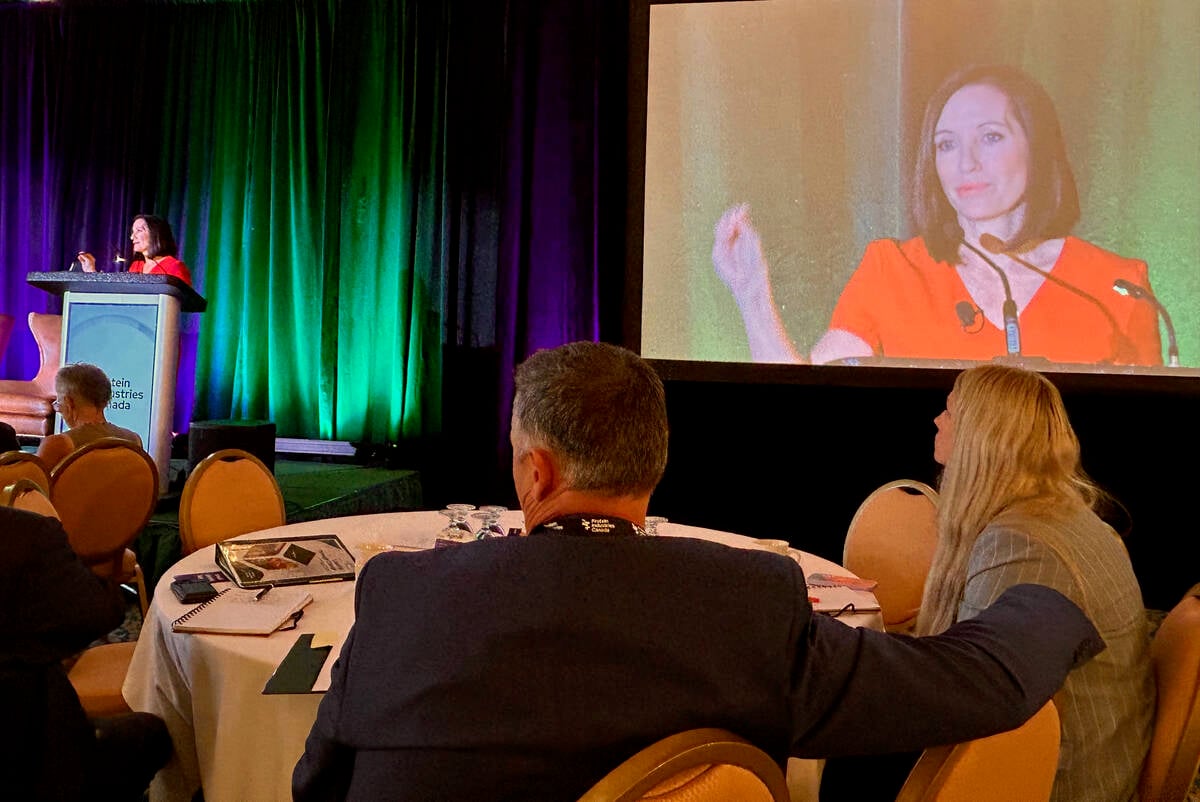
Canada told trade crisis solutions in its hands
Canadians and Canadian exporters need to accept that the old rules of trade are over, and open access to the U.S. market may also be over, says the chief financial correspondent for CTV News.
“Today, consumers are getting all sorts of negative messages on social media, in the mainstream press, about all these negative things about agriculture, about where their food is coming from. Unfortunately, they are farther away from where their food is coming from than where they were in the past,” said Deborah Perkins of Rabobank, a member of the global roundtable.
“If they do not know how their food is produced, they are going to believe all these negative messages they are hearing.”
Rabobank says trust appears to have faltered between consumers and food producers.
The lack of trust grew when big corporations neglected to engage with consumers, said Cameron Bruitt of JBS, one of the world’s largest meat packing companies.
“Among consumers, big is bad,” Bruitt said at the conference.
“Trust has eroded through some of our actions as an industry and as the consumer became more curious about how their food was produced, for too long we said, ‘back off, it is none of your business.’ ”
That attitude resulted in more non-governmental groups pressuring major food producing companies to explain how they would reduce their carbon footprint and switch to alternative proteins, arguing animal agriculture is not sustainable.
A coalition called Farm Animal Investment Risk and Return, which represents 40 investors who control $1.25 trillion, approached major food companies such as Kraft Heinz, Costco, Walmart, General Mills, Unilever and Tesco at the end of September about their plans to change to plant based proteins.
Another document, called Changing Climate, Changing Diets, from the British Royal Institute of International Affairs think-tank called on governments to initiate national debates about meat consumption and intervene on behalf of public health. It linked over-consumption of meat to cancer, heart disease and diabetes.
It also said the livestock sector accounts for 15 percent of global emissions, which is the equivalent of exhaust emissions from all the vehicles in the world. A shift to healthier patterns of meat-eating could bring about a quarter of the emissions reductions to slow global warming, it added.
This report was in response to a recent study at Oxford University that said “a global switch to diets that rely less on meat and more on fruit and vegetables could save up to eight million lives by 2050, reduce greenhouse gas emissions by two-thirds, and lead to health care-related savings and avoided climate damages of US$1.5 trillion.
Scientists at the conference said the world is not likely to go vegan, but they agreed new ways are needed to satisfy the rising demand for protein without depleting natural resources.
The U.S. Environmental Protection Agency says agriculture contributes 10 percent of greenhouse gas emissions in the United States. Livestock’s direct emissions are four percent of all greenhouse gases in the U.S., while transportation using fossil fuels emits the most.
At the same time, the spectre of nine billion hungry people by 2050 hovers.
Technology improvements are the best approach because it is not practical to return to old fashioned farming methods, said Frank Mitloehner, an air quality specialist at University of California in Davis.
“Do we think animal welfare was better in the good old days? Do we think food safety was better? The public believes that to be true by and large,” he said.
The need for greater efficiency is the key to producing more food.
A cow that produces very little milk has a high carbon footprint. A cow in India produces 20 times less milk than an American cow. Most of its feed intake goes to keep it alive rather than producing milk.
“In parts of the world we have hundreds of millions of head of livestock where tens of millions are needed. There are large herds, but they are not efficient. They need improved fertility, improved health, fewer parasites and better genetics,”Mitloehner said.
Fewer and more productive animals release less methane and provide more food.
The U.S. beef herd has dropped to 90 million from 140 million in 1970, but the smaller herd produces the same amount of beef.
Nine million American dairy cows in 2016 produce more milk than 25 million cows in 1950.
“The carbon footprint of a glass of milk has shrunk by two-thirds since the 1950s. When you produce more per animal, you use less resources, and I think that is an absolute key in livestock production,” he said.
Roger Cady, sustainability lead for animal health company Elanco, agreed that technology and im-proved productivity are the best ways to feed future populations and reduce the environmental footprint.
Thirty-seven percent of the world’s protein needs now comes from milk and eggs, 23 percent from pork, 22 percent from poultry 14 percent from beef and 20 percent from wild game.
Improved animal care is one way to produce more meat. Twenty percent of the world’s animals are lost because of disease and other production losses.
“This number is also true in the United States when you think about the number of piglets that are lost, the number of calves that are lost, especially at birth, in the dairy industry. It is tremendous,” Cady said.
One in four dairy cows in the U.S. faces mastitis, nine in 10 chickens struggle with coccidiosis and one in three pig herds experience ilieitis. Improved animal health and production can produce more, but there are problems outside North America.
Average hen production is 290 eggs per year in the United States, but “there are still parts of the world where we are not even close to 150 eggs per year,” he said.
A steer may take up to five years to reach maturity in many parts of the world. It can require 28.2 kilograms of feed to produce a kg of beef compared to North America, where optimal steer growth is two years and requires 13.3 kg of feed per kg of beef.
“Feed consumption across the system is an excellent proxy for water use, greenhouse gas production and energy use. It is a way we can get to monitor progress of feed used to produce a unit of beef.”
Cody said the world needs to understand that meat matters in the human diet. An African study that worked with elementary school aged children over five school terms added more protein, energy and milk to their diet.
Learning and test scores im-proved when diets were supplemented with meat and/or milk. Children gained weight and their body structures improved.
All this is possible, but the meat industry needs public support because more investment is going into research for protein alternatives. The livestock community wants to protect the lifestyle but tends to be introverted about ex-plaining the importance of food production or how agriculture can be sustainable.
“We need to learn how to tell our stories,” Cady said.




